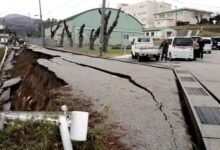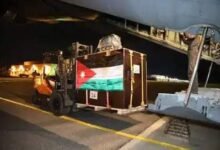
U-2 Spy Planes Snooped On Chinese Surveillance Balloon
The Evangelist edition
February 7, 2023
The U.S. Air Force’s U-2S Dragon Lady spy planes were among the assets tapped to monitor and collect intelligence on a Chinese government surveillance balloon during its recent trip across parts of the continental United States and Canada. An F-22 Raptor stealth fighter finally shot down the balloon with an AIM-9X Sidewinder missile off the coast of South Carolina on Saturday, and efforts are now underway to recover the wreckage from the Atlantic Ocean. Readers of The War Zone can first get up to speed on what we already know about this incident, and its conclusion, in our past reporting here.
A U.S. defense official confirmed the use of the U-2S as part of the broader response to the Chinese spy balloon to The War Zone today. It’s not immediately clear all the points along the balloon’s voyage that U-2s were present.
The Pentagon said over the weekend that the balloon had first entered U.S. national airspace over the Aleutian Islands on January 28. It then passed into Canadian airspace two days later and returned to U.S. airspace, over northern Idaho, on January 31. The balloon then followed a broadly southeasterly track across the contiguous United States before moving out over the Atlantic off South Carolina, where it was ultimately shot down.
The War Zone has separately learned that at least two U-2Ss helped monitor the balloon while it was over the Midwest, using the callsigns Dragon 01 and Dragon 99. At least one Dragon Lady was also in contact at times with the Air Force’s Eastern Air Defense Sector (EADS), also referred to by the callsign Huntress. EADS is part of the U.S.-Canadian North American Aerospace Defense Command (NORAD) and is responsible for safeguarding the airspace over roughly the eastern half of the contiguous United States.
While we can’t say with certainty exactly what the roles of the U-2Ss in monitoring the balloon were, their employment makes good sense. The Dragon Lady is the only aircraft in U.S. military inventory, at least that we know, that can fly persistently at altitudes even higher than where the balloon was soaring, which was between roughly 60,000 and 70,000 feet throughout its trip across the United States and Canada.
On top of that, each U-2S can be configured to collect multiple types of intelligence simultaneously, as you can read more about here. One common sensor loadout for the Dragon Lady consists of the Senior Glass signals intelligence suite, components of which are spread between bays in the fuselage and two underwing ‘Super Pods’ when it is installed, together with either the Senior Year Electro Optical Reconnaissance System-2 (SYERS-2) or Advanced Synthetic Aperture Radar System-2 (ASARS-2) in the nose. SYERS-2 is a multi-spectral camera system that can produce high-resolution imagery of a target, even at night. ASARS-2 also produces images, but by using a radar operating in a synthetic aperture mode, giving it an all-weather capability.
With any array of sensors like this, a U-2S could gather high-quality visuals of the balloon, as well as soak up any electronic emissions that it might have been pumping out. The Dragon Lady can further carry robust data links that allow for sharing the information it gathers with personnel on the ground in near-real-time.
The ability of the U-2 to get above the balloon is critical for a number of reasons. Just surveilling it from a top-down perspective using various sensors could provide additional intelligence as to its design and capabilities. Even what could have been hidden within its envelope would have been important to find out. But most importantly, it would provide a way to intercept directional satellite communications from the balloon with greater reliability. This is a critical form of intelligence collection on such a long-range and sensor-laden device like this.
Finally, the U-2 possesses a highly capable electronic warfare suite. Flying in relatively close proximity to the balloon, and especially above it, it’s possible it may have been able to jam any communications being sent to satellites above.
Once again, no aircraft disclosed in the Air Force’s inventory is capable of these high-flying, long-loitering operations.
What electronic emissions they might have been able to collect from the balloons remains unclear, as does what intelligence-gathering capabilities it might have had. It would not be hard for such a lighter-than-air platform to carry its own cameras, radars, and especially signals intelligence payloads.
Yesterday, Politico reported that the U.S. Intelligence Community had previously assessed that smaller balloons detected off the coast of Virginia in 2020 were carrying some kind of radar-jamming payload. (The Warzone)










